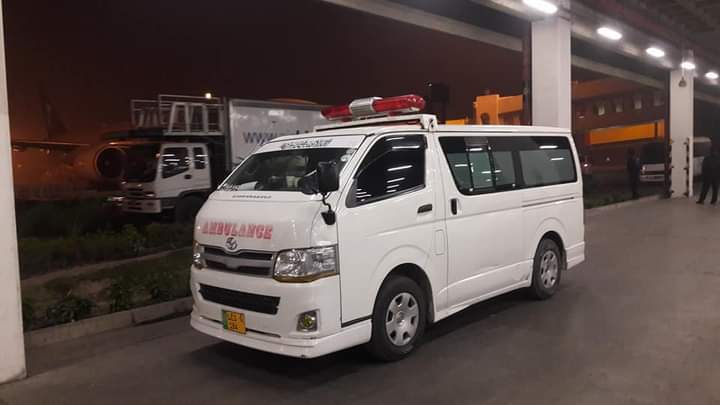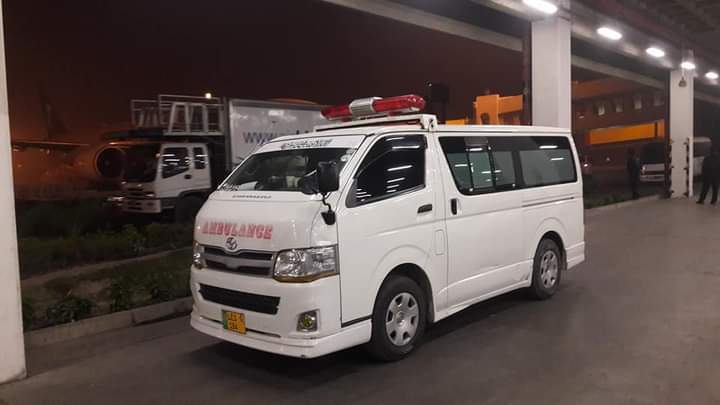When you feel sick or hurt, you need help as soon as possible. A hospital ambulance rushes to take the patient to the hospital. Do you know that every ambulance is different? Expert medical teams and advanced equipment are available. A Specialist Ambulance service is also known as a specialist ambulance.
People with special needs, such as newborns or people with heart problems, may require a specialist ambulance. Treatment is available even before the patient reaches the hospital. It saves lives and speeds up recovery.
What Are Specialist Ambulance Services?
Hospitals provide advanced medical care through specialist ambulance service. Staff handle patients or emergencies requiring specialized ambulances. Special medical needs or serious situations require these ambulances.
The term cardiac ambulance refers to an ambulance that provides care for heart problems, such as a heart attack. Doctors can check the patient’s heart in ambulances before they get to the hospital and diagnose what’s wrong. Heart patients can also get help from the medical staff.
Newborns who are born prematurely or with health problems may also require a neonatal ambulance. An ambulance ensures the safety and warmth of the baby. On board, the medical team knows how to care for babies.
Also, air ambulances can reach remote areas. An air ambulance can reach remote locations much faster and transport patients to hospitals.
Other emergencies require specialist ambulances, such as car accidents, mental health crises, or transporting contagious patients. Specialist ambulance service have specific equipment to ensure the patient gets the right care. Expert medical teams handle different types of emergencies.
Ambulances provide fast, specialized care when every second counts. Patients get the right treatment even before they reach the hospital. When an ambulance service is called for an emergency, each patient’s needs are taken into account.
Types of Specialist Ambulance Service
When transporting people to the hospital, a specialist ambulance service gives them the right care. Various types of ambulances are available for different emergencies.
The cardiac ambulance helps people with heart problems, like heart attacks or chest pains. The ambulances carry special equipment such as heart monitors and defibrillators to shock the heart back into rhythm.
Pediatric and neonatal ambulances treat children, babies, and newborns. Incubators and ventilators are available for babies who might have difficulty breathing. A special team of doctors and nurses cares for the young in these ambulances.
In car accidents, trauma ambulances treat serious injuries. Patients stay stable while these ambulances transport them to hospitals.
It is possible to get a bariatric ambulance if you are too heavy to take a regular ambulance. The ambulance has stronger stretchers and equipment to transport overweight or obese patients safely. During their journey to the hospital, the crew ensures that these patients are comfortable and safe.
Mental health ambulances assist people during mental health crises. Mental health ambulances are equipped with a medical staff that is gentle and caring.
Air ambulances can either be helicopters or airplanes. During an emergency, air ambulances transport patients to hospitals. A regular ambulance has all the equipment but can fly over traffic and long distances. These specialist ambulances provide the best treatment for specific emergencies.
How Do Specialist Ambulances Differ from Regular Ambulances?
A specialist ambulance differs from a regular ambulance in several ways. An ambulance is great if you break a bone or are sick. In addition, a team of medical professionals is available to assist with general medical issues. Specialist ambulance service, however, cater to specific types of emergencies. More advanced tools and medical teams are available.
People with heart problems, for instance, use cardiovascular ambulances. The machine monitors the heart and helps it if it stops beating. This equipment may not be available in a regular ambulance, making it less useful. The purpose of newborn ambulances is to provide care to newborns. Besides incubators to keep the baby warm, it has other tools to ensure the baby’s safety.
There is also a professional medical staff working in a specialist ambulance. The doctors deal with specific problems, such as serious injuries and heart problems. While regular ambulances have trained staff, they may not be as knowledgeable about specific conditions. In an ambulance, the patient gets the right kind of care.
Patients can also feel more comfortable and safe in specialist ambulances. In bariatric ambulances, stretchers are larger and stronger to carry heavy patients. Transporting the patient is safer and more comfortable this way.
Specialist ambulances focus on specific types of emergencies. It treats heart problems, newborns, mental health crises, and serious injuries. While important, regular ambulances don’t offer the same level of care.
Benefits of Specialist Ambulance Services
Specialist ambulance service is crucial when someone is seriously ill. Ambulances for specific emergencies are different from regular ones. A major benefit is that they increase survival chances. Heart monitors and medicine are available in specialist cardiac ambulances. Getting to the hospital earlier can make a big difference.
People can also receive the right kind of care faster with the help of a specialist ambulance. Ambulance teams can begin treating patients before they reach hospitals. Ambulances can save lives in car accidents and births.
In addition, specialist ambulances help patients travel to the hospital comfortably and safely. An overweight person who needs special equipment, such as stronger stretchers, should use a bariatric ambulance. This keeps the patient safe and comfortable. For those with mental health problems, psychiatric ambulances provide a calm, secure environment.
In addition, specialist ambulances can bring in patients who are already stable to hospitals. Doctors and nurses can treat patients during the ambulance ride, reducing the need for emergency interventions. As a result, hospitals can continue to treat the patient without the added burden of handling an emergency.
They can also reach places hard to reach, like air ambulances. Time is of the essence in emergencies.

What Are the Uses of Specialist Ambulances?
In an emergency, a specialist ambulance can provide additional assistance. A person who requires advanced care on the way to the hospital may need one of these special ambulances.
The equipment needed to treat a heart attack might not be available in a regular ambulance, for example. Such cases require a cardiac ambulance. The hospital has special machines, medicines, and trained doctors who deal with heart problems.
Another situation might require a neonatal ambulance if the newborn is very sick or was born too early. During transport, these ambulances have incubators to keep babies safe and warm.
Accidents often result in serious injuries, such as car crashes or falls. Such cases require the use of a trauma ambulance. This equipment can fix breaks, stop bleeding, and prevent more body damage.
Mountain areas or faraway towns might not have an ambulance available immediately. When this happens, it is necessary to use an air ambulance, such as a helicopter. A medical helicopter flies to the location and quickly transports the patient.
A depressed or anxious individual may also need immediate assistance. Mental health ambulances can take people to mental health hospitals.
Even before patients reach the hospital, specialist ambulances ensure that they receive the right care. In recovery, this can save lives.
Specialist Ambulance Service Facing Challenges
Medically complex patients need specialist ambulance services. Costs are a major challenge. Infectious diseases require special equipment like heart monitors, incubators, and air filters. Staff also need special training, which adds to the cost. Many places cannot afford these ambulance services, especially in smaller towns or rural areas.
The availability of goods is another issue. Specialist ambulances aren’t as common as regular ambulances, so they might take longer to arrive. Depending on the area, some may not even be available. For those living far from cities, it can be difficult to get the specialized care they need.
It is also difficult to train and staff specialist ambulance crews. They need special skills to handle emergencies like newborns, heart attacks, and serious injuries. Train these professionals takes a lot of time, and sometimes it’s hard to find enough people with the right skills.
Hospital coordination is another challenge. To provide the right care, specialist ambulances must work closely with hospitals. Occasionally, communication problems between ambulance crews and hospitals delay treatment. It can make it harder for the patient to get help quickly.
The final challenge is distance and time. Patient transport over long distances is necessary in some cases, such as when using an air ambulance. Air ambulances can fly faster, but it can still take time to reach the patient and then the hospital. An emergency can make every second count.
Conclusion
Heart patients, newborns, and people with serious injuries require special care from specialist ambulance service. It is possible to save lives before reaching the hospital with ambulances with this equipment. Aside from being expensive, they are not available everywhere. Specialist ambulances help patients get the care they need quickly despite these challenges.
